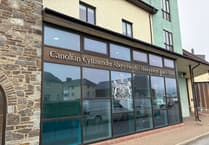A LECTURER at University of Wales Trinity Saint David’s Lampeter campus has unveiled ground-breaking research on astronomy and prehistoric tombs.
Dr Fabio Silva, who teaches the course on Skyscapes, Cosmology and Archaeology in the university’s Sophia Centre for the Study of Cosmology in Culture, and Dr Daniel Brown, an astronomy lecturer at Nottingham Trent University, have caused world-wide media interest with their theory on the use of prehistoric tombs as ‘telescopes’.
After examining 6,000-year-old passage graves in Portugal, Dr Silva concluded they functioned like telescopes without a lens.
Viewers within the tunnels would have had a chance to spot the first appearance of Aldebaran, the red star that is the brightest object in the constellation of Taurus before those outside.
This was crucial for the rituals which timed seasonal migrations, such as taking sheep to higher pastures.
The annual event, he argues, could have coincided with the star’s first appearance in the morning twilight each year.
“This first rising of Aldebaran occurred at the end of April or beginning of May 6,000 years ago, so it would be a very good, very precise calendrical marker for the move to higher ground,” he said.
See this week’s south editions for the full story, in shops and online now





Comments
This article has no comments yet. Be the first to leave a comment.